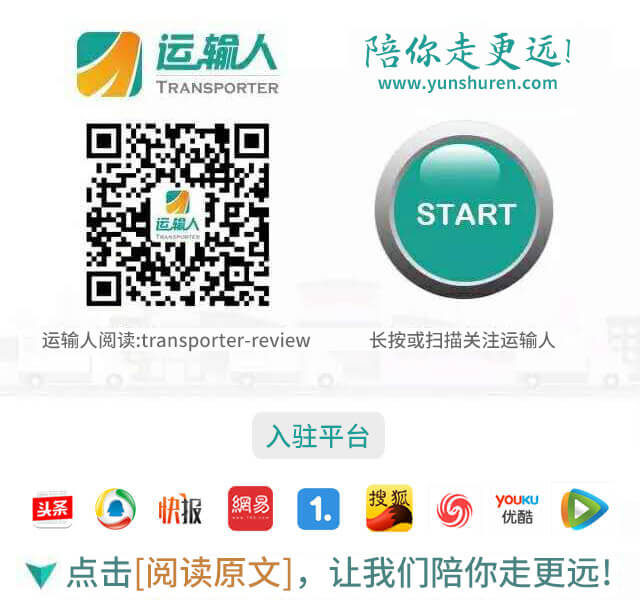News > David Källsäter, Scania's new boss in China: New Super vehicle to take over the starting point, four goals for long-term development
David Källsäter, Scania's new boss in China: New Super vehicle to take over the starting point, four goals for long-term development
2024-08-27 17:16:08 Source:yunshuren.com
Tags: SCANIA




On August 16, Scania's new Super model series was launched in the Chinese market through a cloud-based launch event, and on August 20, the first stop of the new Super offline tour started in Guangzhou.
At the same time, David Källsäter, Managing Director of Scania Sales (China) Co., Ltd, who took up his new post on August 1 this year, met the media for the first time.
David Källsäte has been with Scania for 21 years, and before that he was Managing Director of Scania Sweden for nearly four years, and has been in charge of sales in a number of countries and regions around the world.
How will the arrival of the new experienced manager and the new Super vehicles in China change Scania's three-year low profile in the country? What kind of preparation is Scania making to face the fierce competition and complex environment of China's heavy truck market? Haulier.com caught up with David Källsäter.

David Källsäter's four objectives
When he arrived in China, Källsäter first visited the market. The Chinese heavy truck market is currently facing serious challenges, with the market shrinking by almost half and LNG seizing the market dramatically,” he notes. However, Chinese customers are somewhat similar to European customers in that they have a high level of recognition of the Scania brand and place a higher value on the long-term benefits of their vehicles, a mature market atmosphere that makes it no stranger to expanding our business.”
With a good understanding of the market environment and customer profile in China, he offers four visions. First, focusing on building and enhancing Scania's brand power; second, strengthening cooperation with dealers and enhancing the sales network; third, striving to improve sales through product coverage, spare parts reserves, service enhancement, and financial programs; and lastly, clarifying long-term strategies in the Chinese market with the commissioning of the Rugao production base.
Goal 1: Strengthen brand image with product support
As one of the leaders in the global transportation industry, Scania's products are sold in more than 100 countries and regions around the world, and it has been in the Chinese market for 60 years. It has the dominant title of “King of the Road”, and is highly trusted by transporters. Such a strong brand image and excellent user reputation come from its profound product strength.

The Scania Super series has been on sale in the European market since the 1960s, setting the benchmark for high performance, low fuel consumption, high efficiency and high stability. The new generation of Super models is also based on the same low-revving, high-torque concept, with a new powertrain that took five years and two billion euros to develop.
Källsäter is therefore confident that the new Super will perform well in the market,” he says. ”Scania has a 46 percent market share in Sweden, where the Super series has been proven by customers to save at least 8 percent in fuel consumption compared to the previous generation of NTGs, and the Chinese market is half a generation behind NTGs in Europe, so the fuel consumption of the Super can be better than the previous generation. The Chinese market is half a generation behind the European NTG models, so the fuel consumption of the Super can be more than 10 percent less than the previous generation NTG.”
Through the Super 13-liter engine, Opticruise G25 and G33 transmission, R756 single-stage reduction rear axle core of the three major components of the upgrade, the vehicle's maximum horsepower reached 560 horsepower, to meet the domestic demand for high-horsepower vehicles. Meanwhile, the new D-type fuel tank structure and aluminum alloy wheels are standard in the whole system, which enhance the fuel saving level of the whole vehicle.
Super series models are also equipped with emergency brake assist system (AEBp) and hydraulic retarder as standard, emphasizing product safety. It also offers a variety of drive forms, over a hundred cab colors, side air curtains, multifunctional seats and other configurations to meet customers' individual needs.
The upgrading of the entire power chain and chassis allows the new Scania Super to leapfrog the product power of the new vehicle, once again establishing a high-end brand image of high quality and high value, and filling the vacuum period before the localized model is launched.
Goal 2: Strengthening the network with dealer partners
Guangzhou was chosen as the first stop for the roadshow of the new Scania Super for two reasons. Firstly, southern China is Scania's traditional area of strength in the Chinese market, and it must be given full attention and importance. Secondly, Scania's only directly-managed store in China is located in Guangzhou, and customers in the region have built up a deep trust in the Scania brand and are more likely to be the first to buy the new vehicle.
As for the rest of the country, Källsäter says there are no plans for more directly-managed stores at the moment, but rather to work with dealers. This is because local dealers have more experience, resources and market adaptability. With the Rugao plant coming on stream in the future, the localized dealer network will be able to support the implementation of Scania's market strategy even more strongly.
To further strengthen the dealer network and safeguard the profitability of its partners, Källsäter says Scania will invest more in its dealers in China. In addition, a key account program will be launched to help customers reduce initial investment costs and increase market share by providing detailed TCO solutions and customized financial products.
Relying on the continuously enhanced dealer network, we are able to effectively deepen the connection with customers, provide potential customers with test-drive vehicles, allow customers to use their own goods, routes and drivers, help customers analyze the effect of the test-drive through professional reports, allow them to experience the value of the product in actual car scenarios, and spread the superiority of the product by virtue of word-of-mouth from the users.
Goal 3: Improve the product layout and enhance the sales effect in multi-faceted ways
In most Chinese customers' minds, Scania, as an imported truck giant, has an advantage in the tractor market. According to Källsäter, Scania's high-value products are more suitable for customers who have high demands on timeliness, reliability and safety in view of the diversified vehicle scenarios in the Chinese market.
Currently, Scania's focus in China includes high-end users in cross-border transportation, dangerous goods transportation, cold chain transportation and other industries. Källsäter points out, “Scania's mining trucks have a good track record in the global market, and they can also be promoted in China in the future.”
To further increase the operational value of the vehicles, Scania offers users driving data analysis and driver training services. Professional guidance is provided through live vehicle shadowing by driver trainers, combined with individual driver reports on trips made with Telematics data. And drivers are also rated to help customers get a fuller picture of their skill levels in order to optimize management training programs.
In response to the current market environment, Källsäter says Scania plans to use the National III replacement policy to drive customers to renew their products, and is currently refining the incentives. And it will provide value-added to NTG models through financial products, operating leases and service packages, rather than selling them at a direct discount, to ensure that they retain their value.
Goal 4: Relying on Rugao plant to realize long-term development in China
Since May 2020, Scania's Chinese production plant has been located in Rugao, Jiangsu Province, as a sole proprietorship. According to Källsäter, construction of the Rugao plant will be completed by 2024 and production will start in 2025.
With an investment of $5.3 billion, the Rugao plant is said to be the largest investment project in the Scania Group's nearly 60-year history, and is the world's third production base, new engine plant and R&D center after Europe and South America.
With the completion of the Rugao plant and the opening of the new R&D center, Scania will be able to better adapt to the complex environment and rapid changes in the Chinese market. Advanced features such as locally produced adaptive cruise control, which is custom-designed based on actual road data and customer needs in China, will better enhance the driving experience of customers.
Overall, Scania's large investment in the Chinese market, the transfer of veterans, the high-profile introduction of its star products, and then the planning of the dealer network have all released a signal: Scania will work on both tracks, and localized R&D and production in China will become an important part of Scania's global market.
From this we can see that despite the current poor domestic market environment, there are still good opportunities compared to the global market. Scania, as the first imported truck brand with sole proprietorship to promote localized products, is undoubtedly the springboard for Volkswagen's TRATON to enter the Chinese commercial vehicle market.
 Save
Save





 EN
EN

